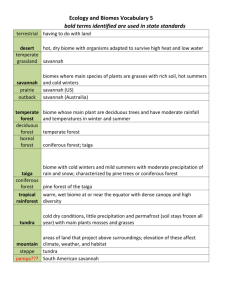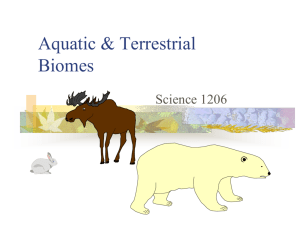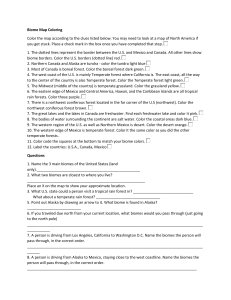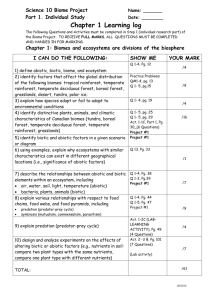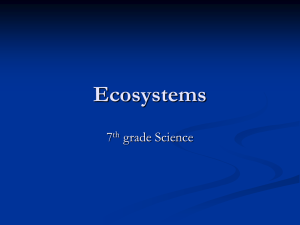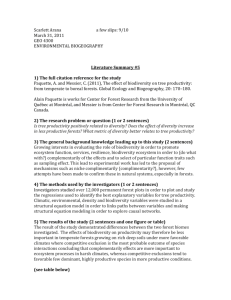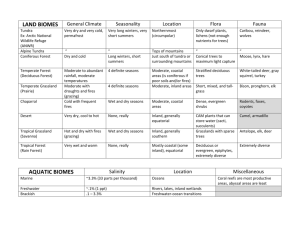Biomes of Canada
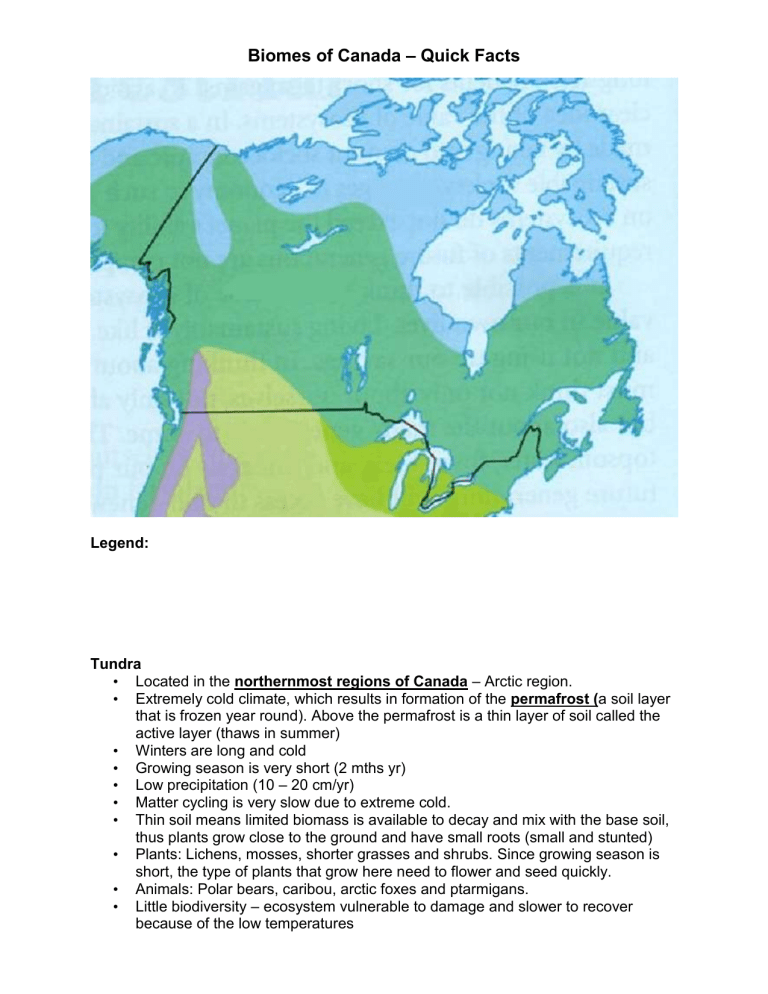
Biomes of Canada – Quick Facts
Legend:
Tundra
• Located in the northernmost regions of Canada – Arctic region.
• Extremely cold climate, which results in formation of the permafrost ( a soil layer that is frozen year round). Above the permafrost is a thin layer of soil called the active layer (thaws in summer)
• Winters are long and cold
• Growing season is very short (2 mths yr)
• Low precipitation (10 – 20 cm/yr)
• Matter cycling is very slow due to extreme cold.
• Thin soil means limited biomass is available to decay and mix with the base soil, thus plants grow close to the ground and have small roots (small and stunted)
• Plants: Lichens, mosses, shorter grasses and shrubs. Since growing season is short, the type of plants that grow here need to flower and seed quickly.
•
Animals: Polar bears, caribou, arctic foxes and ptarmigans.
• Little biodiversity – ecosystem vulnerable to damage and slower to recover because of the low temperatures
Boreal Forest
• Located just south of the Tundra
• Largest terrestrial biome on Earth - covers 50% of Canada’s land area
• Long cold winters and short summers, but no permafrost.
• Temperature changes rapidly, as a result, this area experiences more precipitation (>40 cm/yr)
• Matter cycling is quick in hot weather, but slows in cold.
•
The soil contains some water but is more acidic (the decay of the pine needles) and is poor in nutrients.
• Dominant plant life are coniferous trees – evergreens such as pine, fir and spruce. Their conical shape and needles allow them to cope very well in the boreal forest climate. (Cold, snow, acidic conditioning)
• Shade loving mosses and ferns grow on the forest floor.
• Animals (typically can eat needles, bark & seeds): moose, bears, squirrels, rabbits, deer insects, wolves, snakes and birds.
• Higher biodiversity than the Tundra.
Temperate Deciduous Forest
• Found south of boreal forest in eastern and central Canada (southern portion of
Ontario and Quebec)
• temperate climate
– hot summer and cold winter (but not as cold as boreal forest).
• Four defined seasons, plenty of sunshine and rainfall (year round: 100 cm/yr)
• Higher temps and water result in rapid cycling of matter which results in rich fertile soil (decomposing upper layer; made of decomposing grass and leaves)
• Long growing season (200 days in south)
• Dominant plants are deciduous trees with broad flat leaves that maximize the great amount of sunlight that is offered. You will also find many ferns & shrubs.
• Deciduous forest – three layers – canopy, understorey and litter.
• Light can reach the forest floor, allowing more plants to grow on the forest floor
• More plants allow a greater biodiversity among animals: Deer, bear, bobcats, raccoons, snakes, frogs, insects, shrews, mice, weasels, wolves and many birds
Grasslands
•
Found in the southern regions of the prairie provinces.
• The climate is temperate with a long growing season.
• Moderate precipitation (25 – 75 cm/yr)
• Annual periods of droughts and the temperatures vary considerably throughout the year
• Matter cycling is very fast – result is thick, fertile soil ideal for agriculture
(Topsoil is deep and rich in organic matter which supports extensive root growth)
• The biodiversity is fairly low, much lower than the deciduous forest.
• Dominant plants are grasses (not enough water for trees).
• Animals: Bison, antelopes, wild horses prairie dogs, voles, mice, hawks, wolves, snakes and insects.
• Changes significantly due to human intervention
Biomes – Consolidation Questions
1. What are biomes and how does geography impact their formation/location?
2. Summarize the effect of temperature and precipitation on the major global biome types. Address the three types of forest biomes specifically.
3. Compare marine and aquatic biomes.
4. How is biodiversity affected by the biome or location in which an ecosystem is contained? Suggest reasons for this.
5. Complete the chart below to summarize the major characteristics of Canadian biomes.
Canadian Biome Summary
Biome Temperature Soil and
Growing season
Precipitation Community
Tundra
Boreal
Forest
Temperate
Deciduous
Forest
Grassland


